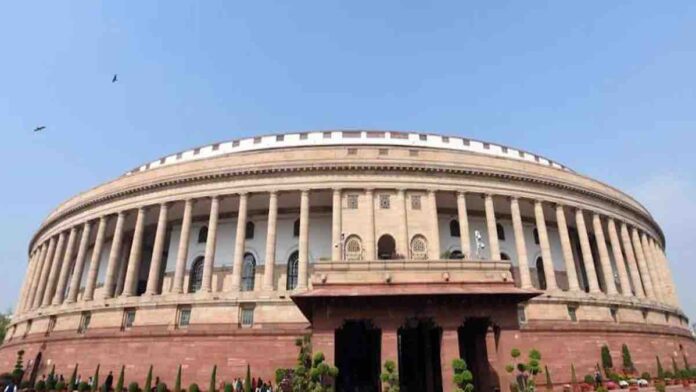The theory of Separation of Powers states that the division of the powers of the Government into three branches – the Legislative, Executive and Judiciary.
The main aim of this theory in practice is so that these three organs do not interfere in each other’s activities.
This makes the organs independent of the powers vested in them so as to work without the interference of each other. This also helps in taking out arbitrariness and abuse of powers of the government.
Another important outcome of this division is that it helps them to keep a check on one another; or in other words, maintains a system of checks and balances.
When this system was proposed in the Constituent assembly, it was felt that there is a need for interdependence between them. There are situations in where these demarcated powers of the three organs can overlap. One of such aspects comes up as Legislative Overruling.
The legislature is conferred with the power of addition, variation or repeal of any provision of the Constitution in accordance with the procedure laid down in the Constitution itself. This exact provision is known as Legislative Overruling.
Article 368 states the Power of Parliament to amend the Constitution and procedure therefore.
The makers of the Constitution made it comprehensive, but at the same time flexible. This was so that the Constitution grows with the Country. The Constitution is King. It gives power to the government and states the actions it is allowed to do. At the same time, it allocates power for its amendment. Here, a question pops up in our minds, if the constitution gives power to the government, how can the government have power over the thing that itself gives it power?
The power to amend the constitution was given so that the Constitution is able to grow with the country in her future. However, this power is also not absolute. The power of amendment is not absolute. It has to be protected and must not change the Basic Structure of the Constitution; thus still allowing it to be Supreme.
Coming back to the concept of legislative overruling; let us first break down the phrase to understand the meaning behind them. ‘Legislative’ means having power to make laws; a body authorized to make laws. ‘Overruling’ means exercising a superior authority to change or disallow a subordinate’s decision.
While the Legislature does not have the authority to interpret and apply the law like the judiciary, it can only enact laws. In case of legislative overruling, the legislature does not interpret or apply the law, rather cancels a certain decision made by the judiciary. This does not mean they are directly interpreting a law or applying it as the situation only nullifies a decision from the judiciary.
Legislative Overruling first occurred in India in 1951, with the case of State of Madras V. Srimathi Champakam. This has become a landmark judgement in the history of India as it led to the First Amendment in the Constitution.
Also Read
This case related to the reservation allotted in the colleges in Madras. A certain number of seats were allotted for outside state students and discretionary allotment by the state. All other seats were divided between four categories for districts and reservation of seats in these was done according to religion and caste. It was stated that if selection for seats was based on merit rather than religion and caste it would promote equal opportunity for all as embedded in Art.15 of the Constitution. This article stands for prohibition of discrimination on grounds of religion, race, caste, sex or place of birth. Thus, making reservations was stated to be unconstitutional. The Supreme Court also ruled in favor of the same, stating that educational institutions shall not discriminate students on any basis.
However, this decision was overruled by the legislature by the very first amendment of the Constitution. Sub-clause 4 was added onto the Constitution which circumvented the decision of the Apex Court. This clause provides that the State can make special provision for the advancement of any socially and educationally backward classes. Thus, the ruling in the Champakam judgement was changed by the legislature without overstepping the authority given to it.
However, before this case came the one of Shankari Prasad V. Union of India. The above case amended an article from the fundamental rights and walked into the question of basic structure of the constitution. The case also added to the ongoing struggle between the judiciary and the legislature for supremacy in independent India. The question was brought before the court whether the fundamental rights can be amended under Article 368.
After Independence, agrarian land reforms through legislation were enacted as the Zamindari Abolition Act. This upset the Zamindars as the act deprived them of their landholdings. Some of them came together in a petition to the High Court which upheld the Act. However, to put an end to this type of litigation altogether, the remedy by the legislature was the Constitution (First Amendment) Act, 1951 with the change in Article 13. The original said that the state shall not make any law that takes away or abridges the rights given to the citizens in Part III and any such law made in contravention of this article shall be deemed void to the extent of contravention. Thus, the land reforms wouldn’t be constitutionally valid, as having land was a fundamental right before.
The amendment inserted article 31A and article 31B in the Constitution of India which allowed for the State securing estates. This is another instance of legislative overruling wherein, the government moved forward to make a change so as to promote a larger public good when it intervened with Fundamental Rights.
This action of legislative overruling has been done on various occasions to nullify the judgments of the Courts or fit in a larger public good which may become a litigating nuisance. One more case in this field is that of State of West Bengal V. Bela Banerjee after which the legislature added clause 2 and clause 2A to Article 31A which provided that ‘a court could question no law on grounds that the compensation paid for acquired property is inadequate’.
In the case of Keshvananada Bharti V. State of Kerala the court was of the view that the word ‘amount’ meant a fair return of the property acquired. The legislature passed the 44th Constitutional Amendment, deleted this right from the chapter on fundamental rights in 1978.
After the landmark judgment in Kesavananda Bharti, the 42nd amendment added clause (4) and (5) to Article 368 to nullify the ruling in the said case. These clauses stated that no limitation would be there on the power of the legislature to amend provisions of the Constitution. The parliament (legislature) represented the will of the people, and the limitation imposed in the Kesavananda Bharathi case was nullified.
The next instance of a legislative overruling being enacted to nullify a judgment arose in the case of Indira Nehru Gandhi V. Raj Narain, wherein the setting aside the election of Indira Gandhi was challenged. During this the legislature enacted the 39th Constitutional amendment which added Article 392A to the Constitution and stated that the elections of the President, Vice President, Prime Minister and the Lok Sabha Speaker cannot be challenged in any court except only before a parliamentary committee.
However, this amendment was held to be unconstitutional, since it violated the basic structure of the Constitution.
Similarly, comes the case of Mohd. Ahmed Khan v. Shah Bano Begum; more popularly known as the Shah Bano case. The Court had held that a Muslim wife was also entitled to alimony. The Legislature, passed the Muslim Women (Protection of Rights on Divorce) Act, 1986 to dilute the effects of this judgment which denied Muslim women their right to alimony. However, in subsequent cases the Court interpreted the Act in order to reassure the validity of the Shah Bano decision; which thus nullified the effects of the Act.
On one side, the Supreme Court has always pressed on the fact that enacting amendments which nullify the judgements of the Supreme Court will always encroach upon the power of the judiciary.
Article by Sai Kulkarni – Intern




